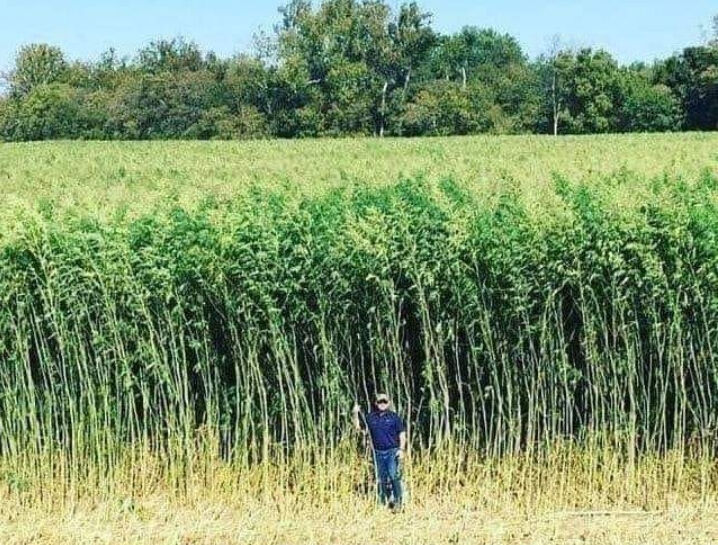The Many Uses of Hemp; Biofuels, Paper and as Substitute for Wood in Construction
One hectare of hemp produces 25% more oxygen than one hectare of forest, ensuring an approximately double supply of cellulose.
One hectare of hemp grows in six months.
According to Brittanica.com hemp can be used in textiles production, construction and even as biofuel while manufacturing of paper could save millions of hectares of forest every year.
Hemp originated in Central Asia, in China in particular, as early as 2800 bce and was practiced in the Mediterranean countries of Europe early in the Christian era, spreading throughout the rest of Europe during the Middle Ages.
It was planted in Chile in the 1500s and a century later in North America.
Hemp is grown in temperate zones as an annual cultivated from seed and can reach a height of up to 5 metres (16 feet). Crops grow best in sandy loam with good drainage and require average monthly rainfall of at least 65 mm (2.5 inches) throughout the growing season.
Crops cultivated for fibre are densely sowed and produce plants averaging 2–3 metres (6–10 feet) tall with almost no branching. Plants grown for oilseed are planted farther apart and are shorter and many-branched.
In fibre production from hemp, a maximum yield and quality are obtained by harvesting soon after the plants reach maturity, indicated by the full blossoms and freely shedding pollen of the male plants. Although sometimes pulled up by hand, plants are more often cut off about 2.5 cm (1 inch) above the ground.
The fibre strands, usually longer than 1.8 metres (5.8 feet), are made of individual cylindrical cells with an irregular surface.
It is strong and durable and is used for cordage—e.g., twine, yarn, rope, cable, and string—and for artificial sponges and such coarse fabrics as sacking (burlap) and canvas.
The novel “hempcrete,” a composite material made of hemp and a lime binder, can be used similarly to traditional concrete in non-load-bearing applications.
Hemp can also be used as an alternative to wood pulp in some instances; it is frequently used in papermaking and is a sustainable alternative to fibreglass insulation in buildings.

